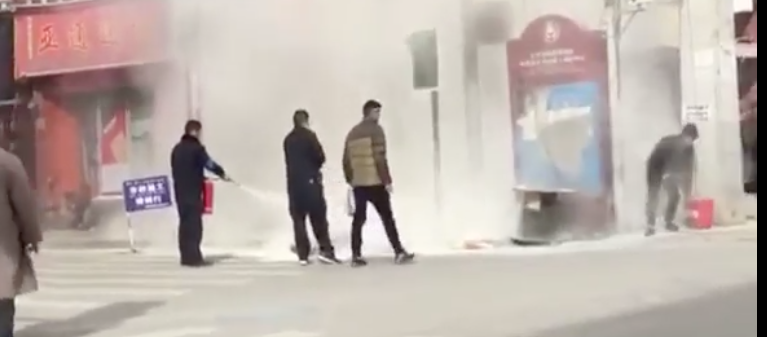Citing Radio Free Asia and UK-based advocacy group Free Tibet, the Associated Press reports that a Tibetan Buddhist monk self-immolated in Garze Tibetan Autonomous Prefecture in Sichuan Province on April 15. If reports prove authentic, this would become the 148th confirmed self-immolation in protest of Beijing’s policies in Tibetan regions of China since 2009, of which at least 125 were fatal.
The unidentified monk was taken away after the fire was extinguished by security forces, reports said. It was unclear if he survived.
A man who answered the phone at the local police station on Monday said he was unaware of the case and “not clear” about the situation. The government for Garze Tibetan Autonomous Prefecture, which includes the town of Kardze, referred questions to the police.
[…] A YouTube video purported to be of the incident showed two men spraying fire extinguishers on what appeared to be a body at the edge of a busy street as a crowd gathered.
Free Tibet acquired the video from a witness who posted it on social media, according to John Jones, a spokesman for the group. [Source]
The video posted by Free Tibet can be seen on their website, along with their account of the self-immolation.
Last month, 24-year-old Tibetan Pema Gyaltsen self-immolated in Garze, becoming the first in 2017 to use the protest method. The man was thought to have been alive when arrested by authorities, but his current condition is unknown. In other recent cases of Tibetan self-immolation, authorities have reportedly detained bystanders for circulating footage.
With Chinese authorities strictly managing the domestic media narrative and limiting foreign journalists’ access to conflict-prone ethnic minority regions like Tibet and Xinjiang, incidents often go uncovered in China, or are only described by Chinese state media or foreign-funded organizations and advocacy groups, like Radio Free Asia or Free Tibet. As foreign media faces increased difficulty covering Tibet, the pop-cultural Tibet advocacy so prevalent in the 1990s through superstar activism, Hollywood movies, and Tibetan Freedom Concerts has also waned. At Pacific Standard last month, Massoud Hayoun cites Tibetan activists and scholars on the diminishing presence that the Tibet advocacy movement has in the Western mind, compared to years past:
“Not only does the New York Times mention Tibet less, and not only does the American public … not talk about the issue, and not only is it Hollywood sidestepping this issue,” says a Tibetan activist who asked not to be named out of fear of reprisal from authorities. “The whole world is doing this. It’s because the Chinese government’s influence is growing.”
[…] “As for the Dalai Lama’s popularity, there is a slight shift in his role in the West from being an advocate on the Tibet-China issues to being a leading figure on ethics and religious tolerance in general,” [Columbia University Tibet scholar Robert] Barnett adds. “The latter position continues to give him a huge audience in universities and other sectors around the world. That’s a shift in the type of media focus he’s interested in, rather than a decline in his profile.”
[…] Some activists for the Tibetan cause blame a more turbulent world for the decline in international awareness of Tibetan affairs.
“There are many conflicts taking place around the world and Tibet has to compete for news coverage with the frequently shocking news from Syria, Ukraine, Sub-Saharan Africa, and other areas where there are wars and natural disasters,” Jones says. “Tibet retains many of its supporters from the 1990s, but, given the suffocating level of control that China is imposing, it is hard for news to get out of Tibet and for people around the world to get a true sense of how repressive China’s rule there is.” [Source]








